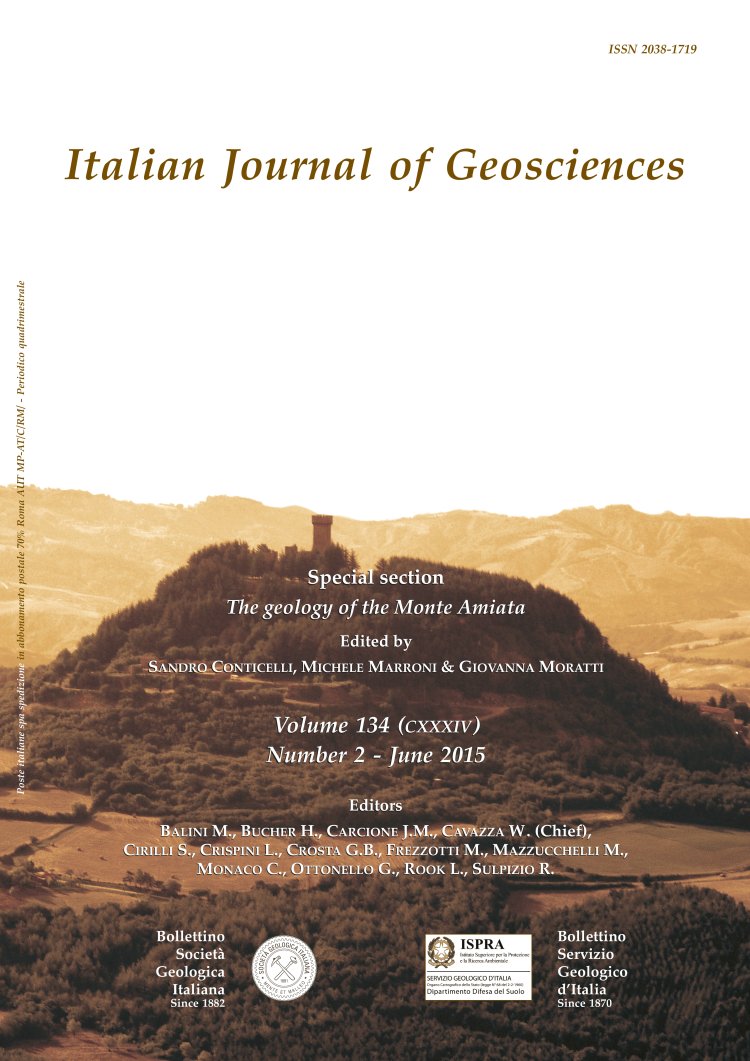
The Tuscan Nappe structures in the Monte Amiata geothermal area (central Italy): a review
Andrea Brogi (*), Enrico Capezzuoli (**), Domenico Liotta (*) & Marco Meccheri (***)
(*) Dipartimento di Scienze della Terra e Geoambientali, Università di Bari. Corresponding author: domenico.liotta@uniba.it
(**) Dipartimento di Fisica e Geologia, Università di Perugia.
(***) Dipartimento di Scienze Fisiche, della Terra e dell'Ambiente, Università di Siena.
Volume: 134 (2015) f.2
Pages: 219-236
Abstract
The present knowledge on the structures affecting the Tuscan Nappe in the Monte Amiata area is here presented, highlighting that the tectonic evolution of the area is incorporated in the inner Northern Apennines framework. In fact, field and subsurface data indicate that the Tuscan Nappe is internally characterized by tectonic doublings, occurred during the collisional stage. Subsequently, as well as in the whole southern Tuscany, Miocene extension determined the lateral segmentation of the Tuscan Nappe; in the Mt. Amiata area, it resulted in three isolated geological bodies, partly cropping out. During Pliocene, the Tuscan Nappe was cross-cut by normal to oblique faults which contributed to channel the hydrothermal fluids that gave rise to the Pleistocene Hg-Sb ore deposits and Present geothermal resources. As it regards the deformation ages, since the late Oligocene-Aquitanian Macigno Fm is involved in the thrusts, the internal stacking of the Tuscan Nappe is related to the post-Aquitanian and pre-Langhian time period, on the basis of the Langhian sediments deposited in an extensional setting and presently recognized underneath the sediments of the nearby Pliocene Radicofani extensional Basin. It is therefore concluded that the switch from compression to extension occurred in a time span encompassed between early Burdigalian and early Langhian.
Keywords
Get Full Text